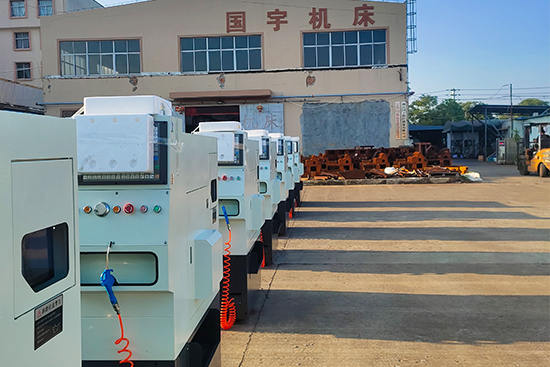Technical Characteristics: It can cut all kinds of turning surfaces by bicycle, such as conical surf...
See Details
Computer Numerical Control (CNC) machines have revolutionized the manufacturing landscape, allowing for accuracy and efficiency in the production process. Among these machines, high precision CNC machines stand out due to their ability to create complex components with remarkable detail. Understanding their features is crucial for industries that rely on high-quality production standards, such as aerospace, automotive, and medical device manufacturing.

Precision and Accuracy
This precision is typically measured in microns (thousandths of a millimeter) and is crucial for industries where even the slightest deviation can bring about catastrophic failures. High precision CNC machines utilize advanced technologies, such as linear encoders and high-resolution servo motors, which ensure that movements are executed with incredible accuracy. This precision reduce the need for rework and scrap, thereby enhancing overall production efficiency.
Advanced Control Systems
High precision CNC machines are equipped with sophisticated control systems that enhance their performance. These systems often incorporate advanced algorithms and software that optimize machining paths, reduce cycle times, and improve overall workflow. Features like adaptive control allow the machine to adjust its operations in real-time based on the cutting conditions, bring about more consistent results. These control systems also facilitate easier programming and integration with other manufacturing systems, making them user-friendly and efficient.
Robust Construction
The construction of high precision CNC machines plays a vital role in their performance. These machines are typically built with high-quality materials and rigid frameworks that reduce vibrations during operation. This rigidity is essential for maintaining accuracy, especially during high-speed machining processes. Additionally, features such as thermal stability and damping characteristics further enhance the machine’s performance by reducing the effects of temperature fluctuations and external disturbances.
Versatile Machining Capabilities
High precision CNC machines are designed to handle a variety of materials, including metals, plastics, and composites. This versatility makes them suitable for a wide range of applications, from prototyping to full-scale production. Many high precision CNC machines come with interchangeable tools that allow for different machining processes, such as milling, turning, and drilling, all within the same unit. This adaptability not only saves time but also reduces the need for multiple machines, bring about more streamlined operations.
Automation and Integration
Modern high precision CNC machines often feature automation capabilities that enhance productivity. Automation systems can include automatic tool changers, part loaders, and conveyor systems that streamline the manufacturing process. Furthermore, high precision CNC machines can be integrated with other technologies, such as robotics and additive manufacturing, creating a cohesive manufacturing ecosystem. This level of integration allows for greater flexibility in production and can significantly reduce labor costs.
Enhanced Software and Programming
The software that accompanies high precision CNC machines is integral to their functionality. Modern CNC programming software provides a user-friendly interface for creating and modifying machining programs. Features such as simulation tools enable operators to visualize the machining process before execution, helping to identify potential issues and optimize machining strategies. Additionally, some machines support open-source programming languages, allowing for customization and increased functionality tailored to specific manufacturing needs.
Continuous Monitoring and Feedback
High precision CNC machines often incorporate real-time monitoring systems that provide operators with valuable feedback about the machining process. These systems can track factors such as spindle speed, tool wear, and material removal rates, allowing for timely adjustments and maintenance. By continuously monitoring these parameters, manufacturers can prevent defects and ensure consistent product quality, thereby enhancing overall operational efficiency.
Our team of digital and business experts will guide you to the right direction.
Let's Talk